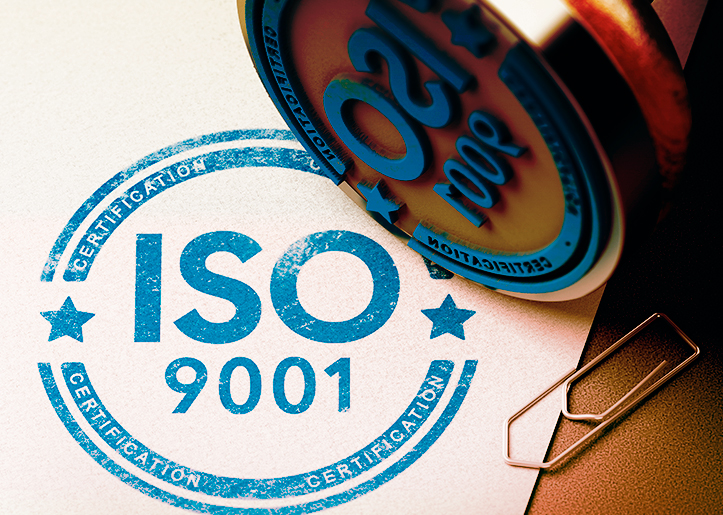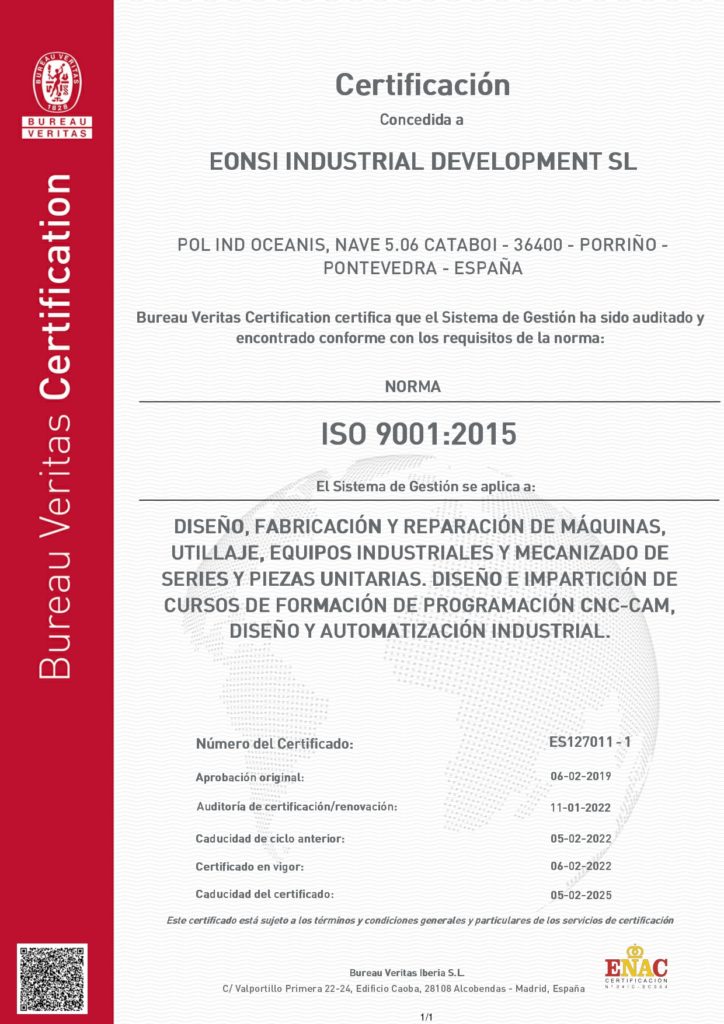Tempering is a heat treatment that is carried out on steel after hardening to achieve…

What is the ISO 9001 Quality Management Systems standard?
The ISO 9001 standard establishes requirements for Quality Management Systems and a working method to improve the quality of products and services.
ISO 9001 standard: what is it, principles, objectives and application to industrial development?
ISO 9001 belongs to the ISO 9000 family of quality management system standards and is a powerful tool to help improve product and service quality and customer satisfaction. It is already used by more than one million organisations worldwide and is a simple and quick way to demonstrate that an organisation puts sufficient interest in ensuring that its products and services perform at their best.
What is ISO 9001?
When understanding what ISO 9001 certification is, it is important to point out that by acquiring this certification, companies guarantee an improvement in their products and services. ISO 9001 is an international standard developed by the International Organization for Standardization (ISO) with worldwide recognition and applies to the quality management systems of public and private organisations, regardless of their size or activity.
History and evolution of the ISO 9001 standard
The interest in suppliers complying with quality programmes and the need for an international standard helped lay the foundations for the future ISO 9001. Thus, it was the British Standard that published BS5750 in 1979, the first reference for the International Organization for Standardization (ISO) to publish its first version in 1987.
Since its publication, there have been four revisions of ISO 9001: The first version was drawn up in 1994, which led to the recognition of the standard; in 2000, when the standard was unified and the eight basic principles of quality management were introduced; in 2008; and finally, the most important revision, in 2015, which brought structural changes such as the emphasis on the leadership model, on the risks of the activity and on the communication model and the interested parties.
Currently, ISO 9001 is the most prestigious and highly valued standard in the field of quality management, the result of a long evolutionary process in which it has been necessary to meet all the needs of organisations and the changes that have occurred in the business context over the last few decades.
What is the 9001:2015 standard?
ISO 9001:2015 is the latest version of the ISO 9001 standard that arose from the need to adapt it to the times that companies are going through today. It is a great opportunity for organisations to improve and deepen their risk management, process organisation and ongoing progression.
Content and structure of the standard
In ISO 9001:2015, the analysis and identification of risks is vitally important. Furthermore, the interconnection and relationships between the elements and influencing factors of the standard are strengthened, the influence of the company on the social and economic environment is taken into account, and top management loses its leading role in favour of the competencies of all staff and the organisational context. Finally, it is important to note that ISO 9001:2015 is based on three fundamental pillars: risk management, the quality management system (QMS) and the company’s functional structure.
The new changes introduced in this latest revision of the standard mean that this is the current structure of the new ISO 9001:2015:
- Scope
- Regulatory references
- Terms and definitions
- Organisational context
- Leadership
- Planning
- Support
- Operation
- Performance evaluation
- Improvement
Objectives and principles of the ISO 9001 quality management system.
The main objective of ISO 9001 is to help companies achieve customer satisfaction by offering products and services with demonstrable levels of quality that meet their needs.
ISO 9001 certification implementation is based on a series of principles that mark the way organisations work, mainly centred around the customer focus of the company’s activity, personal motivation on the part of employees, process management, which improves internal communication, the establishment of specific roles and objectives to improve customer satisfaction, objectivity in decisions, continuous improvement of ISO 9001 certification and alliances with suppliers.
Benefits of applying the ISO 9001 standard
ISO 9001 implementation in organisations increases the company’s credibility and image, customer satisfaction and process integration, leading to increased efficiency, reduced errors and easier and more practical work. In addition, it improves decision making, focusing on applying resources to areas where improvement is needed, creating a culture of continuous improvement, increasing responsiveness, promoting efficiency and reducing costs, and promoting the involvement of senior management and employees.
Application of ISO 9001 in Industrial Development
We are immersed in a highly competitive business environment in which positioning oneself as a company that offers quality products is paramount. Furthermore, research has shown that, in economic terms, producing poor quality parts is much less profitable than investing in processes and materials that conform to established standards.
This is where ISO 9001 certification becomes very important as it allows quality levels to be established in all the processes carried out in the industry, guaranteeing that all the parts and products that are produced comply with the quality standards established through quality departments created specifically for this purpose.
EONSI, an ISO 9001 Certified Company
At EONSI, we have a quality department where finished parts are checked to ensure that they meet the requirements requested by our customers in accordance with our ISO 9001 standard. In addition, this standard obliges us to have all our measuring equipment regularly checked and calibrated and to make traceability records in all processes.
At EONSI we work to offer our customers parts that meet their quality standards, based on the three pillars of ISO 9001: risk prevention, quality management systems and the functional structure of the company.




